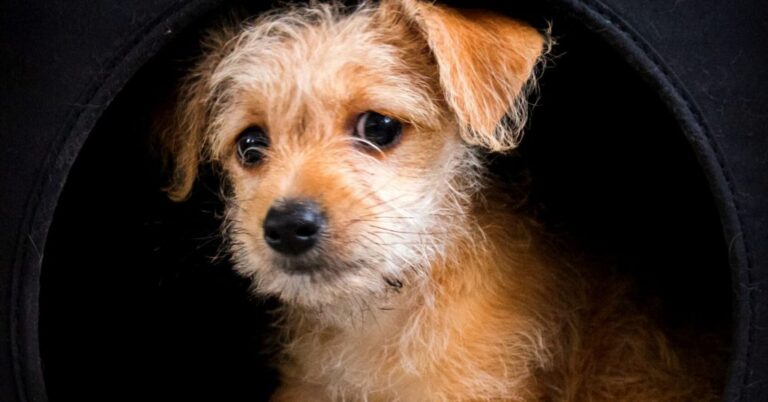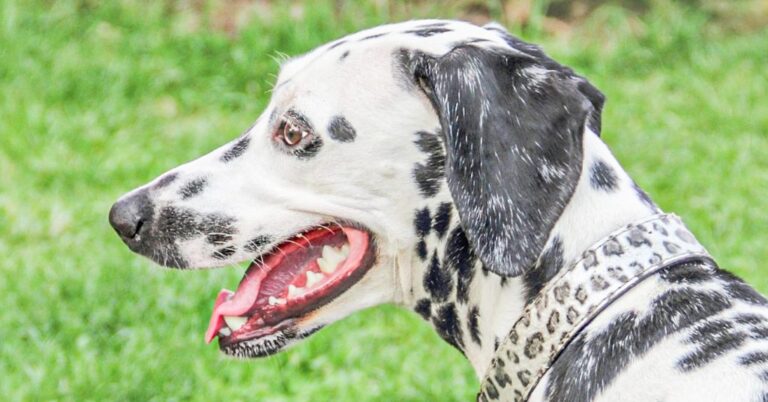Flea Life Cycle (How To Get Rid of Fleas)
Knowing the flea life cycle can help better understand how to get rid of them!
Fleas are super annoying tiny parasites that disturb your dog and invade your home.
Fleas usually prefer animal hosts, but can also bite humans when animals are not around.
Dogs who are allergic to flea bites show signs of extensive scratching, hair loss, hot spots, scabs, and red or flaky skin. In severe cases, they can cause anemia and tapeworms.
If you wish to get rid of fleas, you will need to understand the life cycle of the flea.
What is the Life Cycle of a Flea?
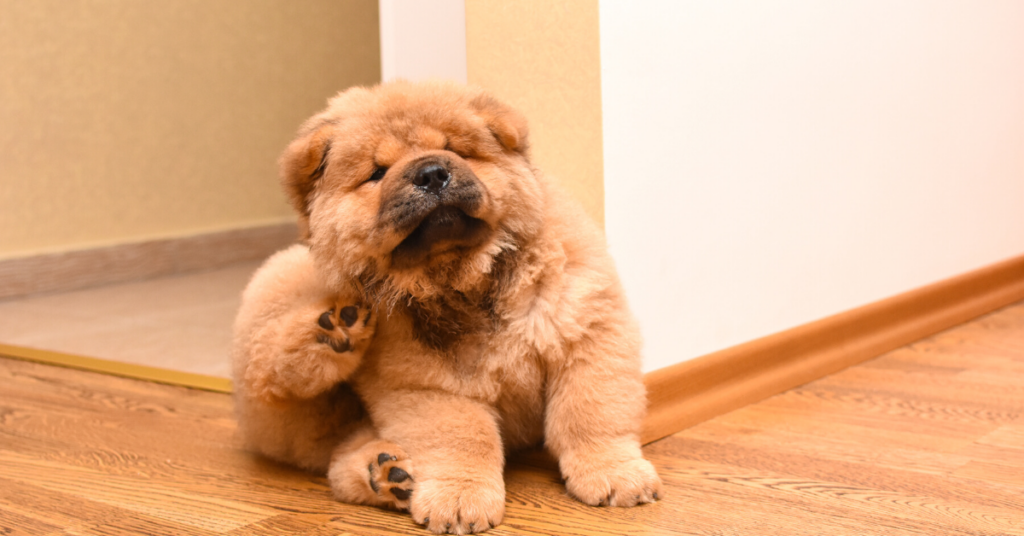
It’s important for pet owners to understand the stages of a flea’s life cycle. Because there is a different treatment for every stage.
So, when you buy a flea preventative, you will be able to understand the label first, and know which product to buy.
There are four stages in a flea’s life cycle. The total life cycle lasts between a couple of weeks, to months and up to a year.
The length of the life cycle depends on the temperature and humidity levels.
Best appropriate environmental conditions for fleas are between 70-85°F and 70% humidity.
Flea Eggs
An adult female flea usually lays eggs after consuming blood from the host, which is your dog. Because blood is essential for the adult flea to reproduce.
The eggs are very small and white, a bit smaller than a sand grain. The adult female can lay up to 50 eggs every day.
After that, the eggs will fall off the dog as he/she moves, where they will spread around the house. 50% of the entire flea population are eggs.
Eggs hatch when the environmental conditions are suitable. They take from 2 days up to 2 weeks to develop, where they enter the larval stage. If temperatures are low, they will take longer to hatch.
Flea Larvae
After the eggs hatch, larvae emerge. They are white, see through, 0.25 inch long, and legless.
Flea larvae are blind and tend to avoid being in the light. They develop by eating “flea dirt” which is pre digested blood the adult fleas excerpt.
In the average household they make up about 35% of the flea population. If the conditions are suitable, the larvae will spin cocoons after 5-20 days of hatching, where they enter the pupal stage.
Flea Pupae
Flea pupae are the cocoons stage, which is the last stage before the adult flea comes up. Cocoons represent about 10% of the flea population.
The cocoon will protect the pupae for days or weeks before the adult emerges. It can even protect it for months, and in some cases years, if the environmental conditions are not suitable.
Cocoons have a sticky coating, which helps them to hide deep in the carpets. This makes it harder to remove them by light vacuums or sweeping.
The adult flea will not emerge unless there is a potential host. They will know that by sensing body heat, vibrations, or rising levels of carbon dioxide.
Movement of your dog or people will alert the flea to emerge from its cocoon to feed.
Adult Fleas
Once the cocoon finds a host, the adult flea will emerge and start feeding from the host within a few hours. After the first blood meal, breeding happens and female fleas start laying eggs after 24-48 hours.
New adult fleas have a flat body, very small, and have a dark color. Once they feed on your pet, they will become larger and lighter in color.
Adult fleas make up less than 5% of the entire flea population in a house. They can live from several weeks to several months on the host animal, where they feed, breed and lay eggs.
How to Get Rid of Fleas
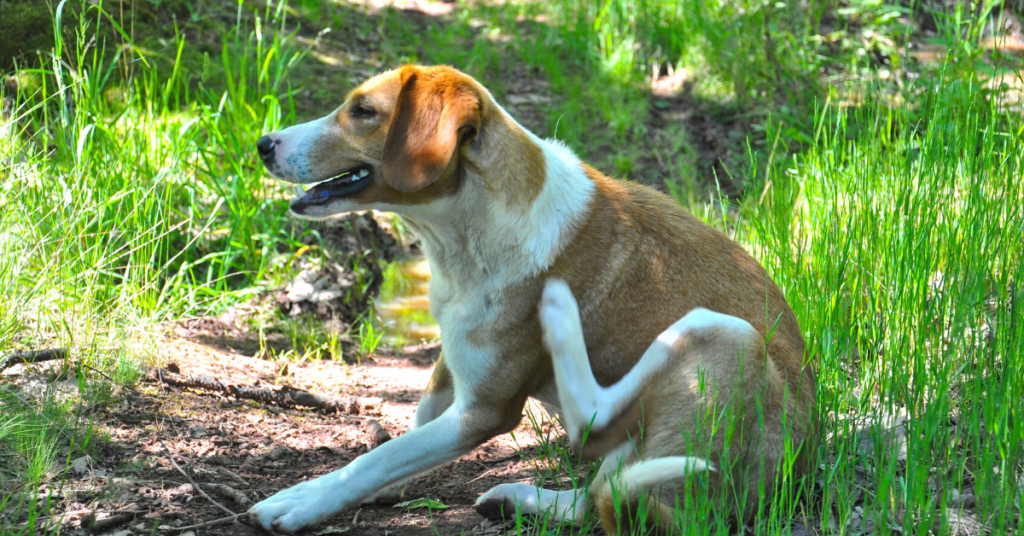
You need to understand the flea life cycle in order to know how to eliminate them. This process needs patience, as it can take 3-4 months to get rid of a flea infestation.
Here are things you can do to get rid of fleas on your pet or in your home:
- Wash everything from the pet bedding, toys, your own bedding, rugs, bath mats, blankets, and cushions in hot, soapy water. Repeat this step frequently, until the infestation has been eliminated.
- Vacuum all carpets, floorings, curtains, and upholstered furniture. After that, throw away the vacuum bag immediately outside in the trash bin. Repeat this frequently.
- Use a flea shampoo or fast acting chemical treatment, such as a flea pill that kills the fleas on dogs and cats within hours, make sure to ask your vet for the best treatment.
- Use an environmental flea control spray that will treat all stages of fleas, or call a local exterminator.
- Vacuum the car seats, if the dog has ridden in the car recently.
- Apply a nontoxic flea treatment for your yard, and keep your grass short, which will make it less inviting to fleas.
How to Prevent Fleas
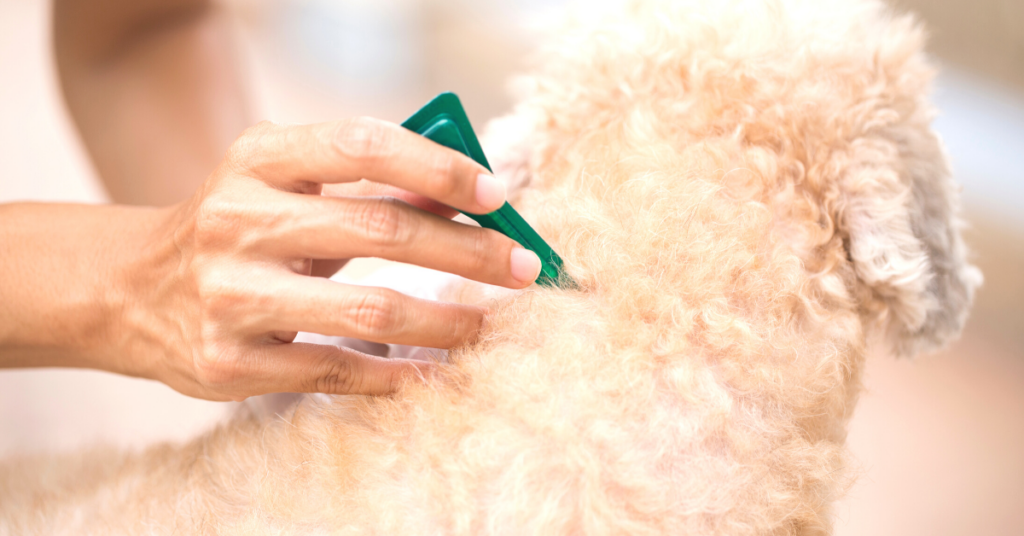
In order to prevent fleas, you can use flea and tick preventatives on a monthly basis, which kill fleas that come in contact with the dog.
There are different flea treatments, such as flea collars to topical liquid applications, or pills.
Consult with your veterinarian about the safest and most effective flea preventative for your pet.
Finally, don’t let your dog interact or play with strange dogs during flea season.
When to See a Veterinarian

If your dog is showing signs like scratching, hair loss, hot spots, scabs, or has a red or flaky skin, it’s better to call your veterinarian to diagnose and recommend the best treatment option.
Your vet can help you find the safest treatment option for you and your dog.





